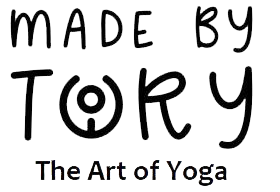Yoga Blocks vs. Bolsters: What’s Right for You?

It is common for women to become addicted to yoga. It refreshes your everyday routine and provides great energy.
Most women in yoga struggle to be comfortable with their poses. When they are unable to hold a position, they typically blame their bodies. They don’t realize body limits and have no idea how to improve performance by introducing some ease (yoga props) into their routines.
Yoga Blocks vs. Bolsters is a common debate when choosing props. These two tools are among the most effective for basic stretching. What is the difference now, and how do they help in poses?
Previously, we explored the 10 best yoga props for back pain relief and why they matter in everyday practice. We also discussed the 18 ways yoga blocks can take your practice deeper. Today, we’ll understand the difference between yoga blocks and bolsters and how to choose the right one for your routine.
What are Yoga Blocks?
Yoga blocks are tools or props used by yogis of all skill levels to improve their practice. They are typically rectangular, constructed of foam or cork. Yoga bricks, also known as blocks, can benefit persons who are new to yoga, have limited mobility or flexibility, are recuperating from an injury, or are searching for a more difficult challenge.
Yoga blocks can help make the following positions easier:
- Downward-Facing Dog:
- Warrior II
- Bridge Pose
- Child’s Pose
What is Bolster?
A yoga bolster is a thick pillow with diverse sizes and fillings that can help you relax, deepen stretches, and support body parts in various poses during your yoga practice.
Bolsters make the following positions easier:
- Child’s Pose
- Reclining Bound Angle Pose
- Supported Bridge Pose
- Corpse Pose

What’s The Difference Between A Yoga Block And A Bolster?
Starting yoga and unsure where to begin with props? While yoga mats are essential, many beginners overlook tools that can improve alignment, flexibility, and relaxation.
Among the best yoga props for beginners, yoga blocks and bolsters are commonly used — but they aren’t the same. Each serves a unique purpose in supporting your body throughout your practice.
The differences to be aware of are as follows:
| Feature | Yoga Block | Yoga Bolster |
| Shape | Rectangular, brick-like | Long and cylindrical or rectangular pillow |
| Size | Typically 9” x 6” x 4” or 9” x 6” x 3” | Around 24”–28” long, 10” wide, 5” high |
| Material | Foam, cork, or wood | Cotton, microfiber, or polyester (filled) |
| Primary Use | Support in standing poses, improve alignment | Support in seated, reclining, and restorative poses |
| Support Level | Firm and solid | Soft but supportive |
| Weight | Lightweight (0.3 to 2 lbs) | Heavier (3 to 6 lbs) |
| Best For | Beginners, balance, and flexibility enhancement | Restorative yoga, prenatal yoga, and deep relaxation |
| Portability | Highly portable | Less portable due to size and weight |
| Common Positions Used | Triangle pose, Half Moon pose, Bridge pose | Supported Supta Baddha Konasana, Viparita Karani |
| Cost | Generally less expensive (per unit) | More expensive due to size and materials |
Yoga Blocks vs Bolsters: Which One is Right for You?
As you can see, yoga bolsters and blocks offer a wide range of applications and distinct advantages. While yoga bolsters are best suited for restorative positions that require surrender and relaxation, yoga blocks are ideal for dynamic poses that require more support or length.
So, how do you decide between the two props? Here are some things to consider:
- Your Goals: Yoga blocks may be a great option if you want to push yourself and deepen your positions. Yoga bolsters may be a great option if you want to rest and refresh.
- What You Need: Consider your needs in every position. Do you require further assistance getting to the ground? You need to relax and let go?
- Your choices: Think about your unique preferences and comfort level. Do you prefer softer or stiffer props? Which feel would you prefer: wood, cork, or foam?
Considering these criteria, you can choose the best prop for your specific needs and preferences.
It’s fine to use both bolsters and yoga blocks in your practice, and you may even combine the two to achieve different results.
The most important thing is to listen to your body and use practice tools that provide you with a sense of stability, comfort, and support.
Tip: Always Think about the Long Haul
Will the bolster be as helpful after a year of healing yoga? Will that block retain its shape even after being thrown into your yoga bag a hundred times? Some materials are simply more durable than others.
While bolsters with heavier contents, like buckwheat, tend to retain their shape longer, cork and wood are rather durable for blocks.
Read reviews to see how other yogis rate the durability of these props. Rather than changing cheap yoga blocks every few months, it is preferable to invest a little more money upfront in something that will last.
Conclusion
Whether you’re deepening your poses or simply seeking comfort, understanding the differences in yoga blocks vs. bolsters can transform your practice. Both props serve unique purposes, and using the right one depends on your goals and preferences.
If you’re looking to upgrade your routine, don’t forget to choose quality products that last. At Made by Tory, we offer thoughtfully crafted yoga props, including blocks, bolsters, and mats made for durability and support. If you’re looking to buy a yoga mat in Dubai, or need trusted yoga gear for any level, we’ve got your back—on and off the mat.
